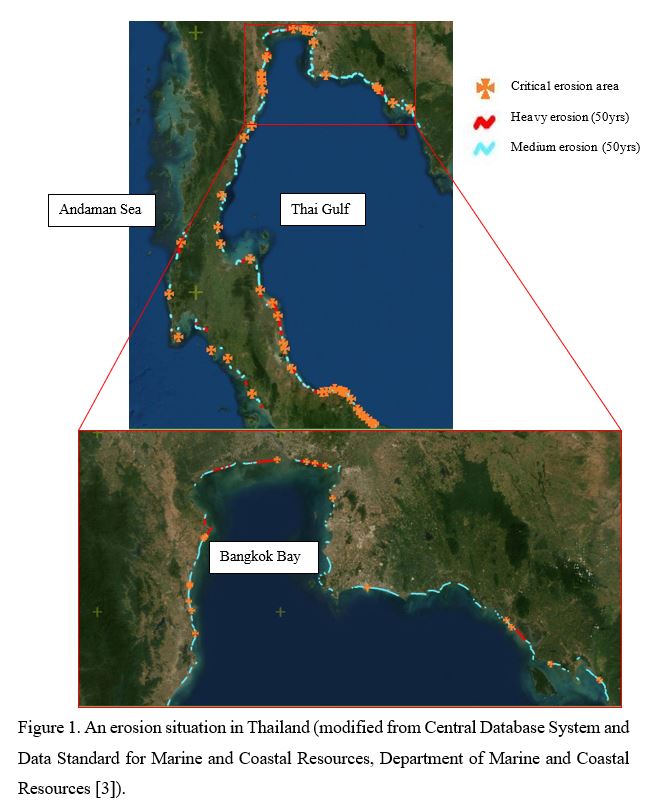In Thailand, there are many usages of the coasts. Department of Marine and Coastal Resources, Ministry of Natural Resources and Environment [1], classified usages of Thai coasts into nine categories including 1) Tourist, 2) Industry, 3) Aquaculture, 4) Salt farming, 5) Community and city resources, 6) Mangrove Forest, 7) Mineral mining and sand mining, 8) Watershed, and 9) Transportation. Thus, Thailand has been binding to the coasts. Thai costs have approximately shorelines length of 3,100 kilometers, which consist of about 2,000 kilometers on the Thai Gulf and 1,100 kilometers on the Andaman Sea. About 700 kilometers of the shorelines suffered or have been suffered coastal erosion for many decades [2]. Figure 1 shows the coastal erosion situation extracted from Central Database System and Data Standard for Marine and Coastal Resources, Department of Marine and Coastal Resources [3]. Coastal erosion causes many problems, both direct and indirect ways, for example, problems on environment, economy, and social. Nearly 180 km2 of coastal areas were eroded, which was estimated to be about 0.1 billion baht [2]. Since the impact of coastal erosion is enormous, it is necessary to implement coastal erosion prevention and mitigation plans in Thailand.

References
[1] Department of Marine and Coastal Resources. “Coastal Land Resources Utilization,” available online at https://km.dmcr.go.th/th/c_56/s_82 (in Thai)
[2] Department of Marine and Coastal Resources. “Guidelines for Project Development and Coastal Erosion Prevention and Resolution Plans”, available online at https://www.dmcr.go.th/detailLib/3712 (in Thai)
[3] Department of Marine and Coastal Resources. “Central Database System and Data Standard for Marine and Coastal Resources,” available online at https://marinegiscenter.dmcr.go.th/gis/ (in Thai)
